Latest News From Health Monitoring
Keeping you up to date on recent initiatives, software enhancements, and the national conversation about public health
Keeping you up to date on recent initiatives, software enhancements, and the national conversation about public health
Now that the ACA (aka “Obamacare”) has gotten past the government shutdown, past the debt ceiling crisis, and is almost to grandmother’s house (once the website is up and working), it’s time to think about how it will affect surveillance. Syndromic surveillance relies upon emergency department chief complaints for early indications of population health events. […]
The number of tick-borne illnesses reported to the U.S. Centers for Disease Control and Prevention is rising. Lyme disease accounts for the majority of reported cases, with about 35,000 cases reported annually. Black-legged ticks in the Northeast United States also infect people with other illnesses, including anaplasmosis and basesiosis.
A recent study published in the journal of Parasites and Vectors has confirmed an increase in the number of ticks carrying deer tick virus–the virus that causes Powassan encephalitis.
According to research published in Health Affairs this week, “there is a substantial risk that many current efforts to promote health information exchange will fail.”
The study was conducted by a group of researchers led by the University of Michigan’s Julia Adler-Milstein, an assistant professor in the U-M School of Information and School of Public Health. Their survey found that about 30 percent of hospitals and 10 percent of ambulatory practices are now participating in one of the 119 operational HIEs across the country, while 74 percent of HIEs surveyed report long-term funding challenges. Fewer than one in four HIEs responding reported that revenues from exchange participants covered their operating costs. Fewer than half were being financially supported by payers.
According to a recent study published in The Lancet, Middle East respiratory Syndrome Coronavirus (MERS-CoV) is less significantly less transmissible than SARS.
A team of researchers researchers from France’s Pasteur Institute analyzed clusters of infections involving 55 of the first 64 cases of MERS-CoV in order to calculate the average number of people each infected person passed the virus on to. This number is known as a “basic reproduction value.”
A high value would indicate that the number of cases could increase rapidly and potentially spread around the world, but a number lower than one would suggest that the virus was likely to fade away.
In the light of MERS coronavirus and concerns over H7N9 Influenza in South East Asia, researchers at the University of Warwick and University of Liverpool mapped the daily contact networks of thousands of individuals to shed light on which groups may be at highest risk of contracting and spreading respiratory diseases. The scientists used an anonymous web and mail survey of 5,027 UK residents to collect information on the types of social contact likely to lead to the transmission of respiratory infections.
According to a recent news article, some residents of Moore, Oklahoma are experiencing “tornado cough”–asthma-like symptoms resulting from tornado debris that remains in the air.
The article suggests that the particles of drywall, fiberglass, and mold thrown into the air during a tornado can result in allergic reactions in people who don’t normally suffer from asthma or allergies.
Our mission: Provide services that focus healthcare resources on existing and emergent threats to community health.
Our customers: State and local public health departments and health systems. We currently serve Connecticut, New Jersey, Pennsylvania, Ohio, Wyoming, and several counties in California, covering a total of more than 40 million people.
What we do: Monitor real-time health-related data for community health indicators. We collect data from nearly 600 hospitals and 3,600 ambulatory systems.
Support email:
support@health-monitoring.com
Emergency support: 1 (844) 231-5776
Additional guidance:
EpiCenter User Manual
700 River Ave., Suite 130
Pittsburgh, PA 15212
Corporate office: 1 (412) 231-2020
General calls: 1 (844) 231-5774
Emergency support: 1 (844) 231-5776

